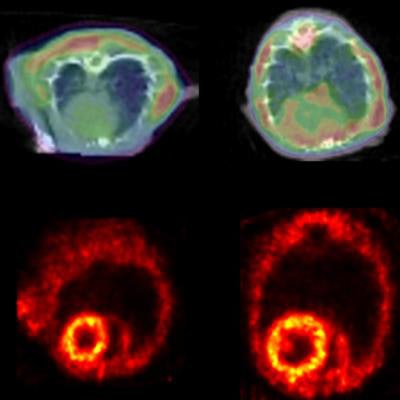
Using preclinical PET and other techniques, researchers appear to have found a connection between the accumulation of protein clumps and heart failure in mice, according to results published in the May 11 issue of Circulation Research. By visualizing the protein, PET could eventually prove useful for monitoring and treating heart disease in humans, the group believes.
Researchers from Johns Hopkins University performed PET scans of mice with the radiotracer Amyvid (Eli Lilly) to see if they could detect amyloid clumps of desmin, a protein found in the supporting structure of cells. Desmin tends to form amyloid clumps in diseased heart cells (Circ Res, Vol. 122:10, pp. e75-e83).
 PET imaging with Amyvid showed amyloid accumulation in mice with heart failure (right) versus healthy controls (left). Image courtesy of Circulation Research.
PET imaging with Amyvid showed amyloid accumulation in mice with heart failure (right) versus healthy controls (left). Image courtesy of Circulation Research.They found that mice with heart failure had 13% more Amyvid uptake than the healthy mice. The researchers believe that PET imaging of desmin amyloid could eventually be used to identify structural changes in the heart as cardiac disease progresses; this could be used to predict the prognosis of the patients.




















